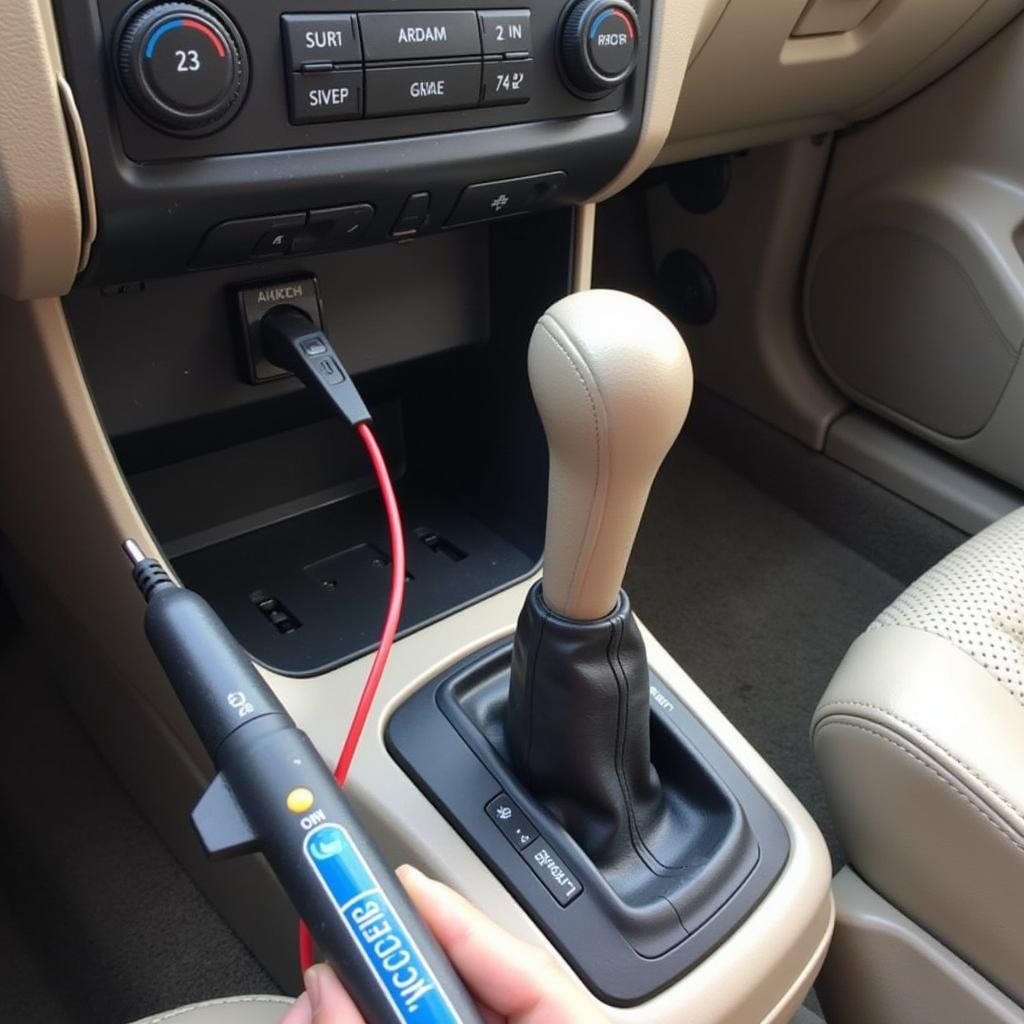Knowing how to repair a reverse car horn is a valuable skill for any car owner. A malfunctioning backup beeper can be a safety hazard, and understanding the problem can save you time and money. This guide will walk you through the common causes of reverse horn failure and provide step-by-step instructions on how to troubleshoot and fix the issue.
Understanding Your Reverse Car Horn System
Before diving into repairs, it’s crucial to understand how the system works. The reverse horn, often called a backup beeper or parking assist alarm, is designed to alert pedestrians and other drivers when your vehicle is reversing. It’s typically activated when the gear shift is placed in reverse. The system generally consists of a horn, a wiring harness, and a switch, often integrated into the transmission. Identifying the faulty component is the first step to a successful repair.
 Reverse Car Horn Components Diagram
Reverse Car Horn Components Diagram
Common Causes of Reverse Horn Failure
Several issues can cause your reverse car horn to malfunction. These range from simple problems like a blown fuse to more complex issues with the wiring or the horn itself. Here are some of the most frequent culprits:
- Blown Fuse: This is often the easiest problem to fix and a good starting point for troubleshooting.
- Faulty Reverse Switch: If the fuse is intact, the reverse switch might be the problem. This switch signals the horn to activate when the car is in reverse.
- Damaged Wiring: Wiring issues, such as corrosion or a loose connection, can prevent the signal from reaching the horn.
- Malfunctioning Horn: The horn itself can fail due to damage or age.
Troubleshooting and Repairing Your Reverse Car Horn
Here’s a step-by-step guide on how to diagnose and fix the problem:
-
Check the Fuse: Locate the fuse box (usually under the dashboard or in the engine compartment) and consult your owner’s manual to find the reverse horn fuse. If the fuse is blown, replace it with a new one of the same amperage.
-
Test the Reverse Switch: Locate the reverse switch (usually on the transmission). Use a multimeter to test the switch for continuity when the car is in reverse. If the switch is faulty, replace it.
 Testing the Reverse Switch with a Multimeter
Testing the Reverse Switch with a Multimeter
-
Inspect the Wiring: Carefully examine the wiring harness for any signs of damage, corrosion, or loose connections. Repair or replace any damaged wires.
-
Test the Horn: If all else fails, the horn itself is likely faulty. Test the horn by applying a direct 12V power source. If it doesn’t sound, replace it.
Conclusion
Repairing a reverse car horn is often a straightforward process. By following these steps, you should be able to identify and fix the issue yourself, saving you the cost of a professional repair. Remember, a functioning reverse horn is crucial for safety, so don’t delay in addressing this issue. If you’re still experiencing problems after trying these troubleshooting steps, it’s best to consult a qualified mechanic. Knowing how to repair a reverse car horn can truly empower you as a car owner.
FAQs
- Where is the reverse horn located? The reverse horn is usually located at the rear of the vehicle, often near the bumper.
- How much does a reverse horn replacement cost? The cost can vary depending on the make and model of your car, but typically ranges from $20 to $100 for the part itself.
- Can I install a reverse horn myself? Yes, in most cases, installing a reverse horn is a relatively simple DIY project.
- What tools do I need to repair a reverse horn? You’ll likely need a screwdriver, a multimeter, wire cutters/strippers, and potentially a socket wrench.
- What is the purpose of a reverse horn? The reverse horn alerts pedestrians and other drivers that your vehicle is backing up, enhancing safety.
- How can I prevent my reverse horn from failing? Regularly checking the fuse and ensuring the wiring is in good condition can help prevent future problems.
- What should I do if I’ve tried all the troubleshooting steps and the horn still doesn’t work? Consult a qualified mechanic for further diagnosis and repair.
Common Scenarios and Questions
- My reverse horn is intermittent. This often indicates a loose connection or a failing reverse switch.
- My reverse horn makes a weak sound. This could be a failing horn or a problem with the wiring.
- My reverse horn doesn’t work at all. Check the fuse, reverse switch, wiring, and the horn itself.
Further Reading and Resources
Looking for more DIY car repair tips? Check out our guide on how to repair stunt rc car.
Need More Help?
Contact us via WhatsApp: +1(641)206-8880, Email: [email protected]. Our 24/7 customer support team is ready to assist.


